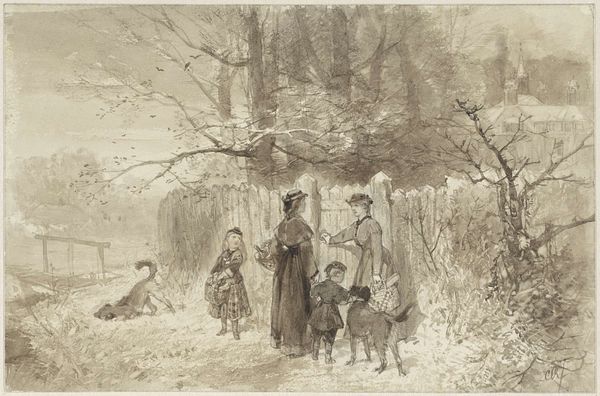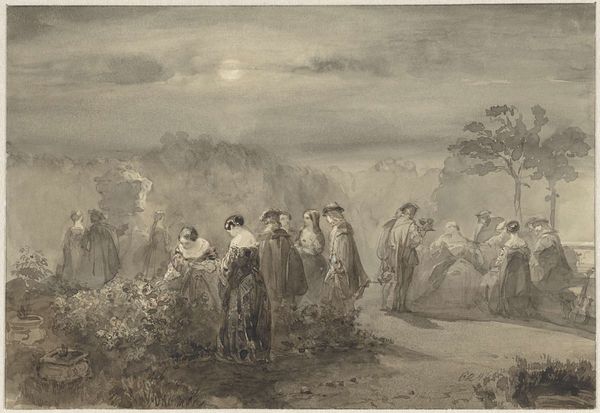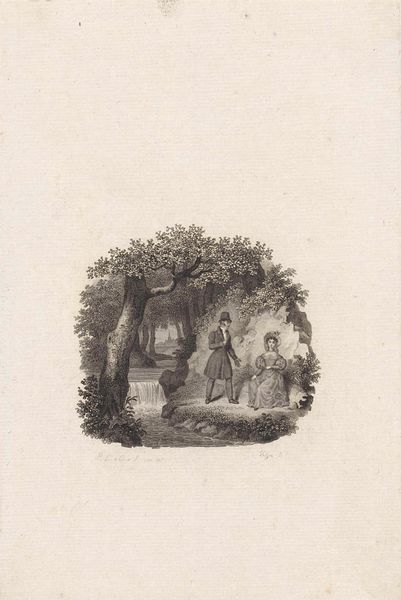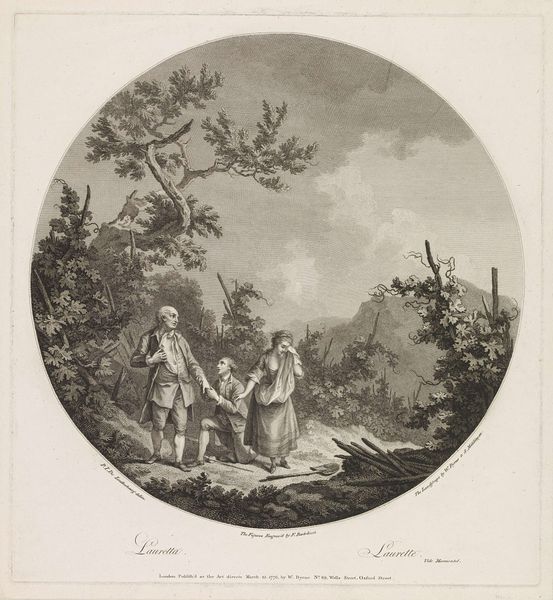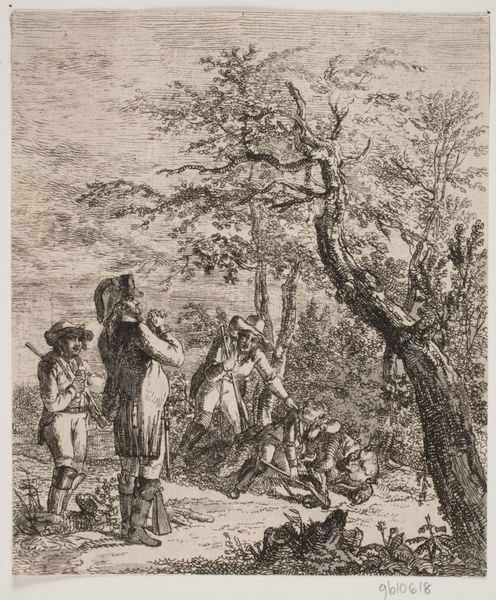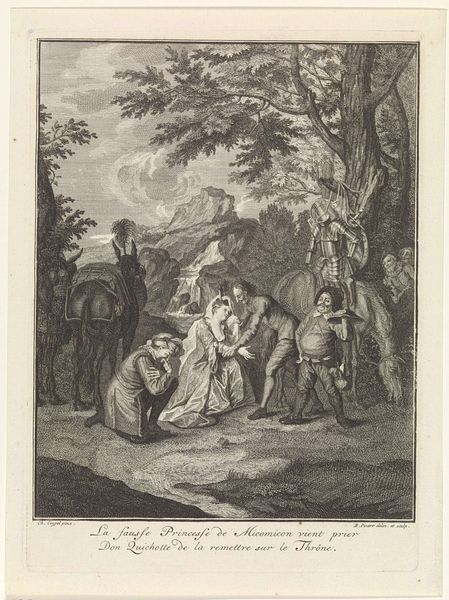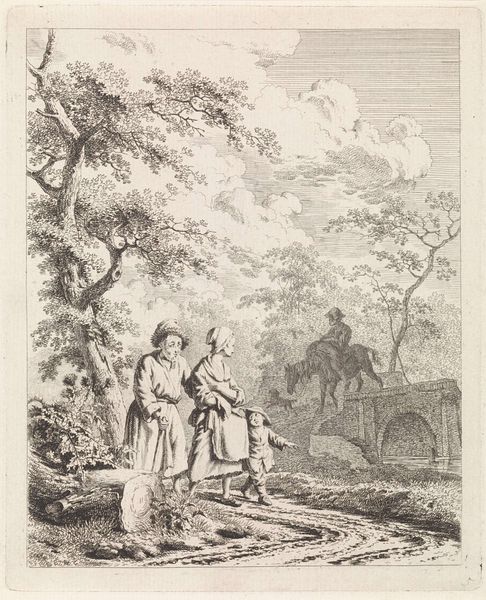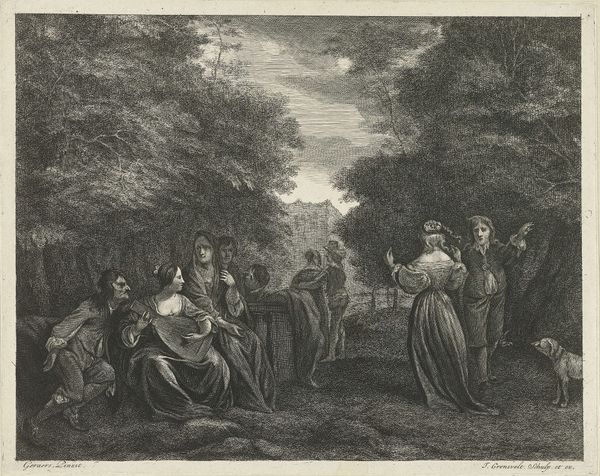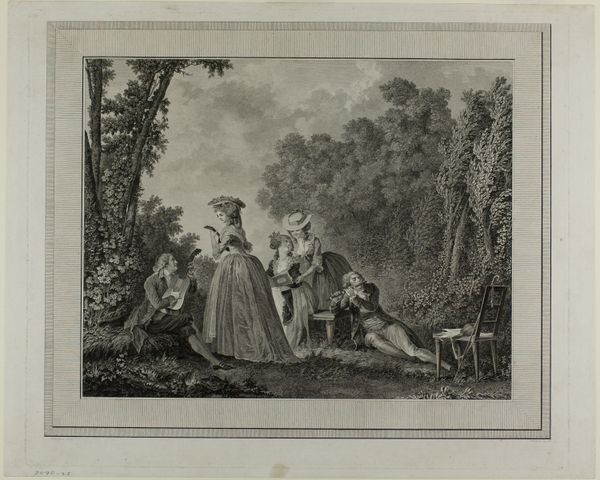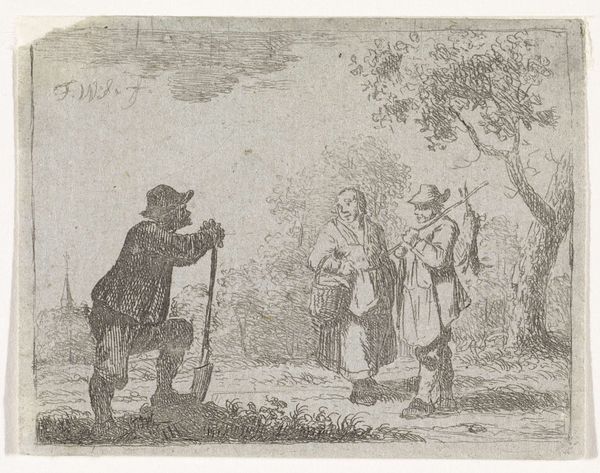
Dimensions: height 212 mm, width 346 mm
Copyright: Rijks Museum: Open Domain
Curator: Welcome. We’re standing before Charles Rochussen’s drawing, "De Zomer," created between 1824 and 1894. The medium is primarily pencil, evoking a sense of delicate impermanence. Editor: It feels like a half-remembered dream. Muted tones, blurred edges... the overall effect is quite melancholic despite its title meaning "Summer". Curator: The drawing showcases a genre scene with figures situated within a landscape. Can you sense any deeper resonance behind its symbols? Editor: I notice how gender and class intersect here. There are separate groups--ladies being attended by younger girls, seemingly nannies or servants, and then another family of a man, a woman with perhaps an elder woman and a child. Each unit’s very presence in nature feels regulated, performed almost. There's even a church visible in the background. This hints at the Church and religious morality as an implicit observer, guiding these family constructs. Curator: That's an interesting angle, viewing nature as another construct. What of the way light and shade are used here? Editor: It almost serves to deepen the sense of separation I mentioned earlier. While there’s an overall diffused quality to the lighting, certain figures are more illuminated than others, subtly creating a hierarchy within the composition. There's not joy here, no playing, not anything spontaneous. Even though it is meant to depict leisure time, that leisure time is a constricting space with imposed order. Curator: Yes, one does note the studied arrangement of the subjects. There appears to be order in a way it suggests hierarchy. It recalls certain conventions of Romanticism, which favored the notion of sentiment within structured art and landscapes. Even the medium suggests pretense; for drawings often feel closer to “studies.” In art practice they can feel inherently academic. Editor: Precisely, it is not realism, but an ideological construction presented through very specific aesthetic choices. I’m especially intrigued by that solitary figure, further back, near the church, with her face to the side, turned away. Curator: Her being set apart seems loaded, now that you point it out. There are worlds within worlds of potential narrative here, wouldn't you agree? Editor: Absolutely. Seeing beyond the surface pleasantries unlocks so much. Curator: Thank you for opening this drawing in that direction. Editor: And thank you for inviting a perspective outside its pure aesthetics.
Comments
No comments
Be the first to comment and join the conversation on the ultimate creative platform.
